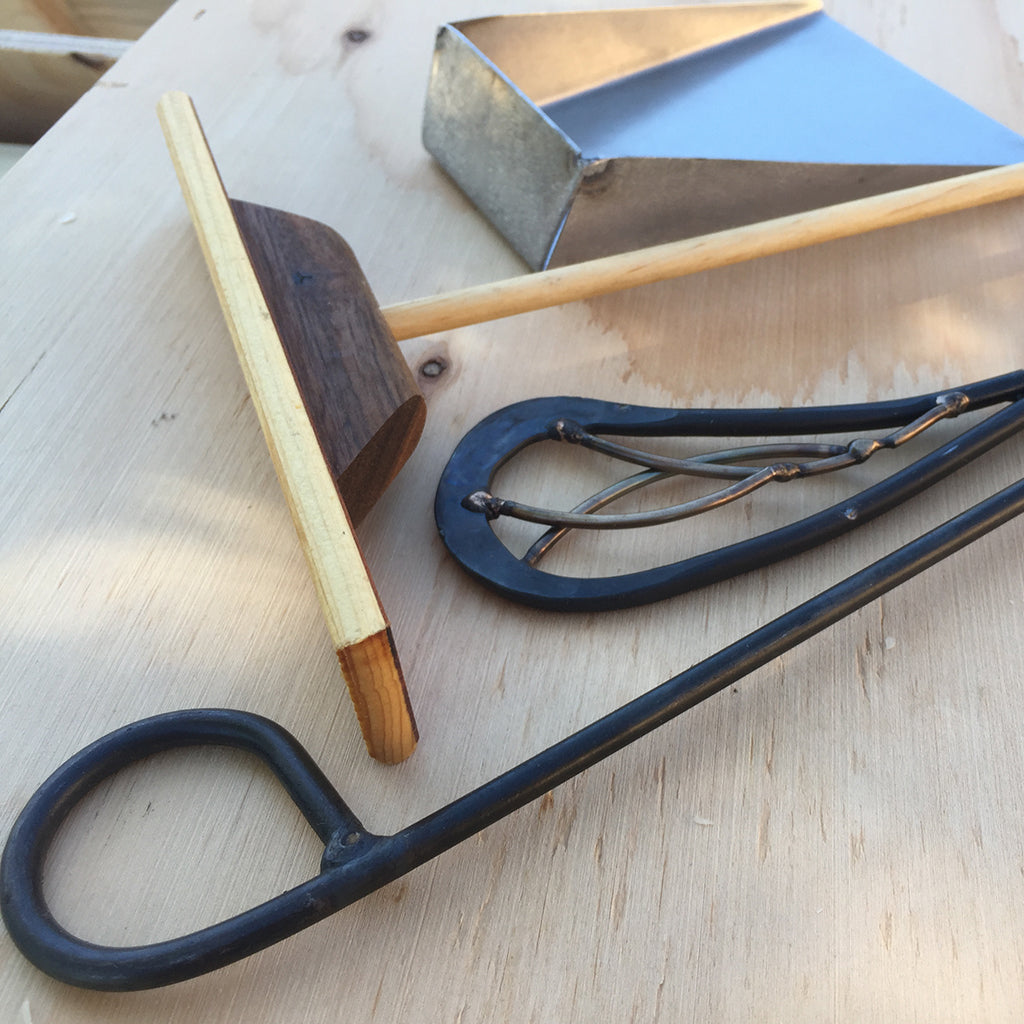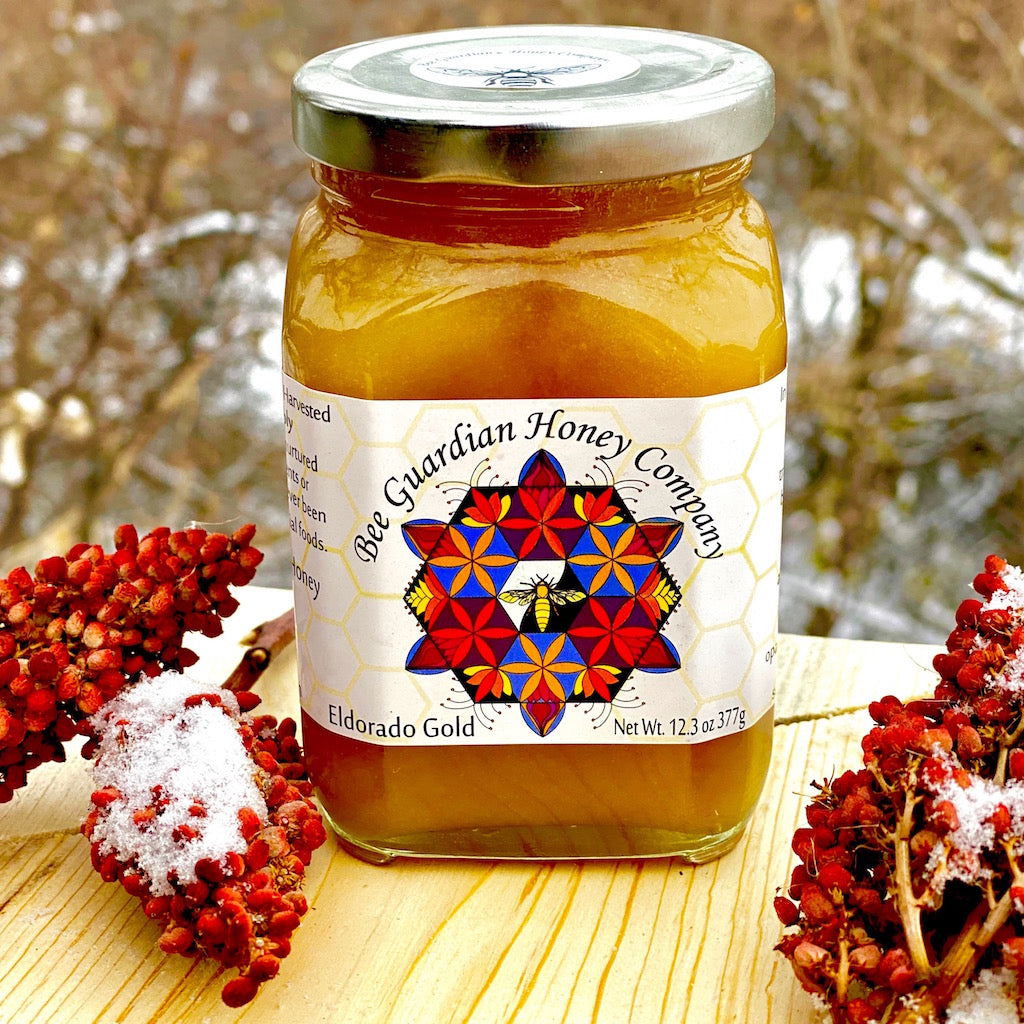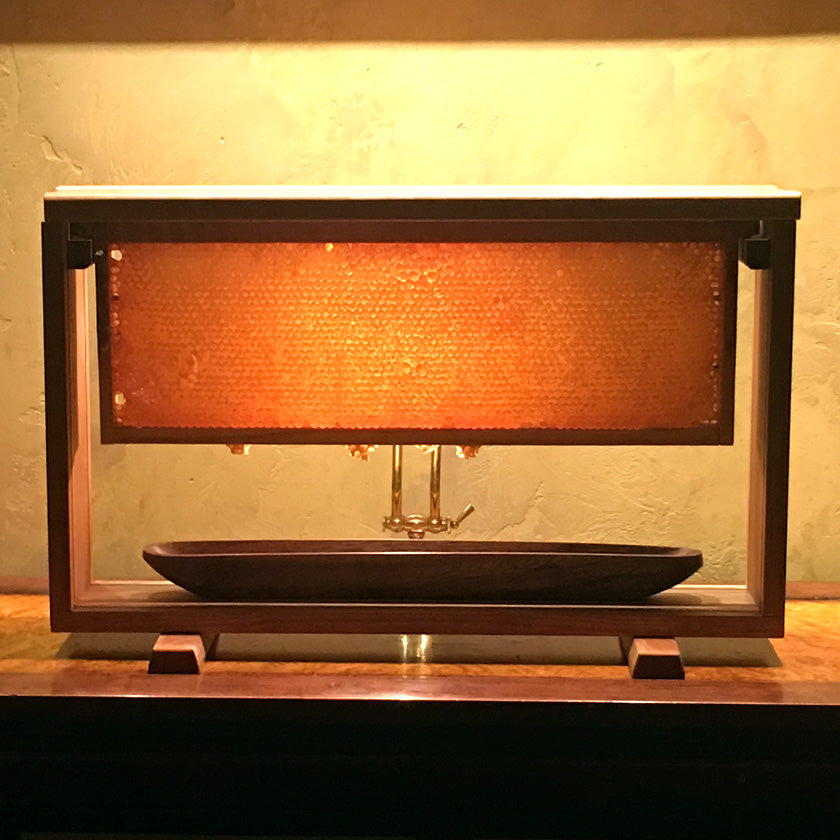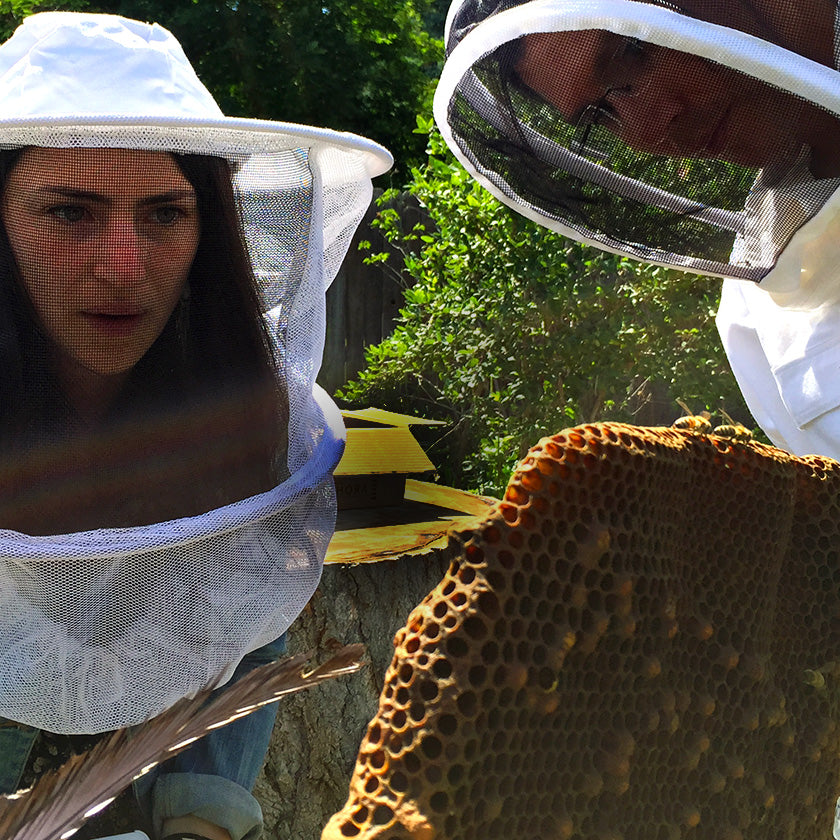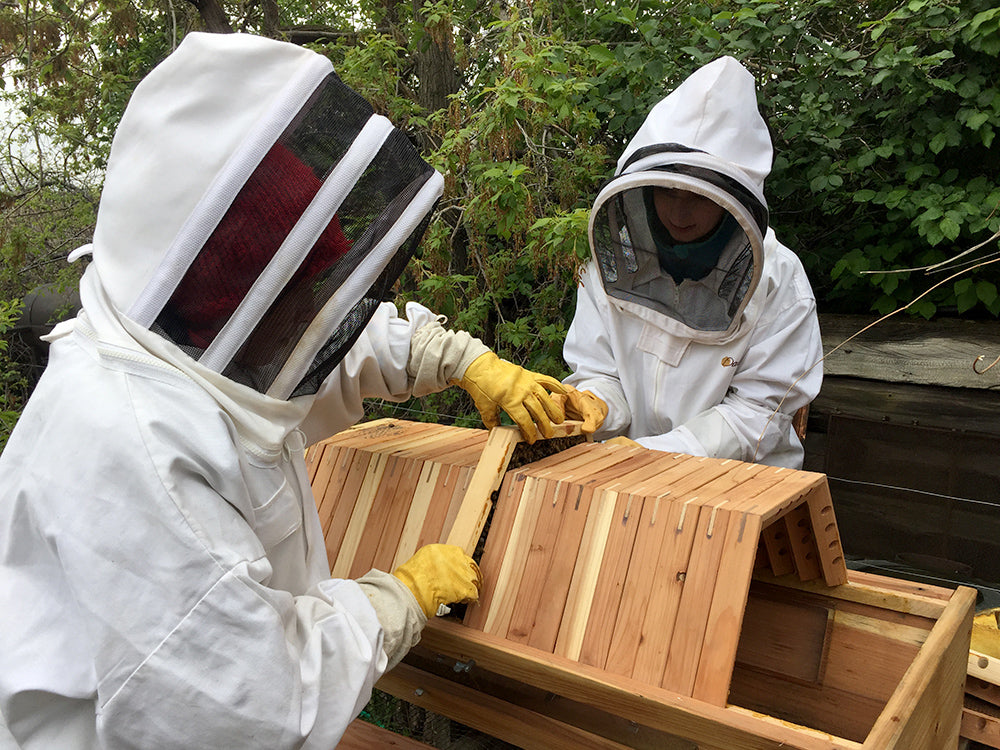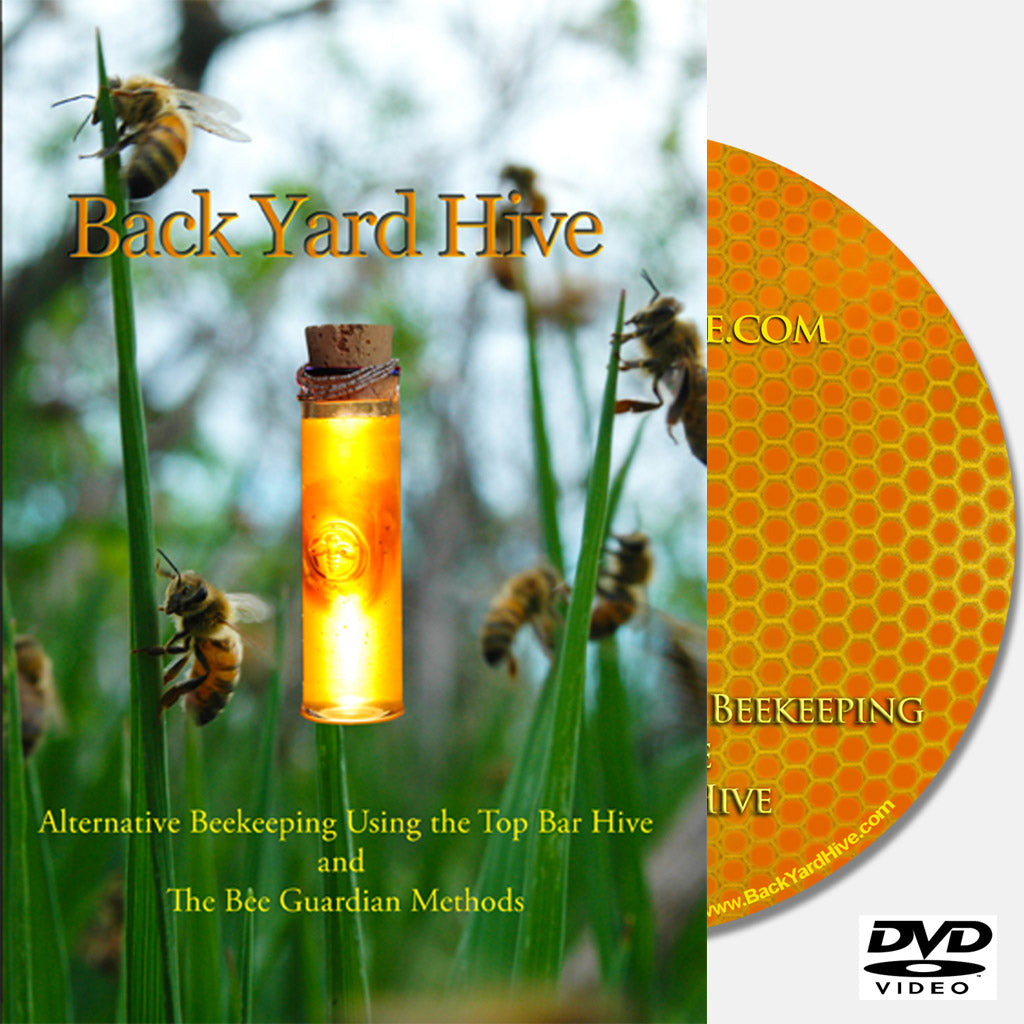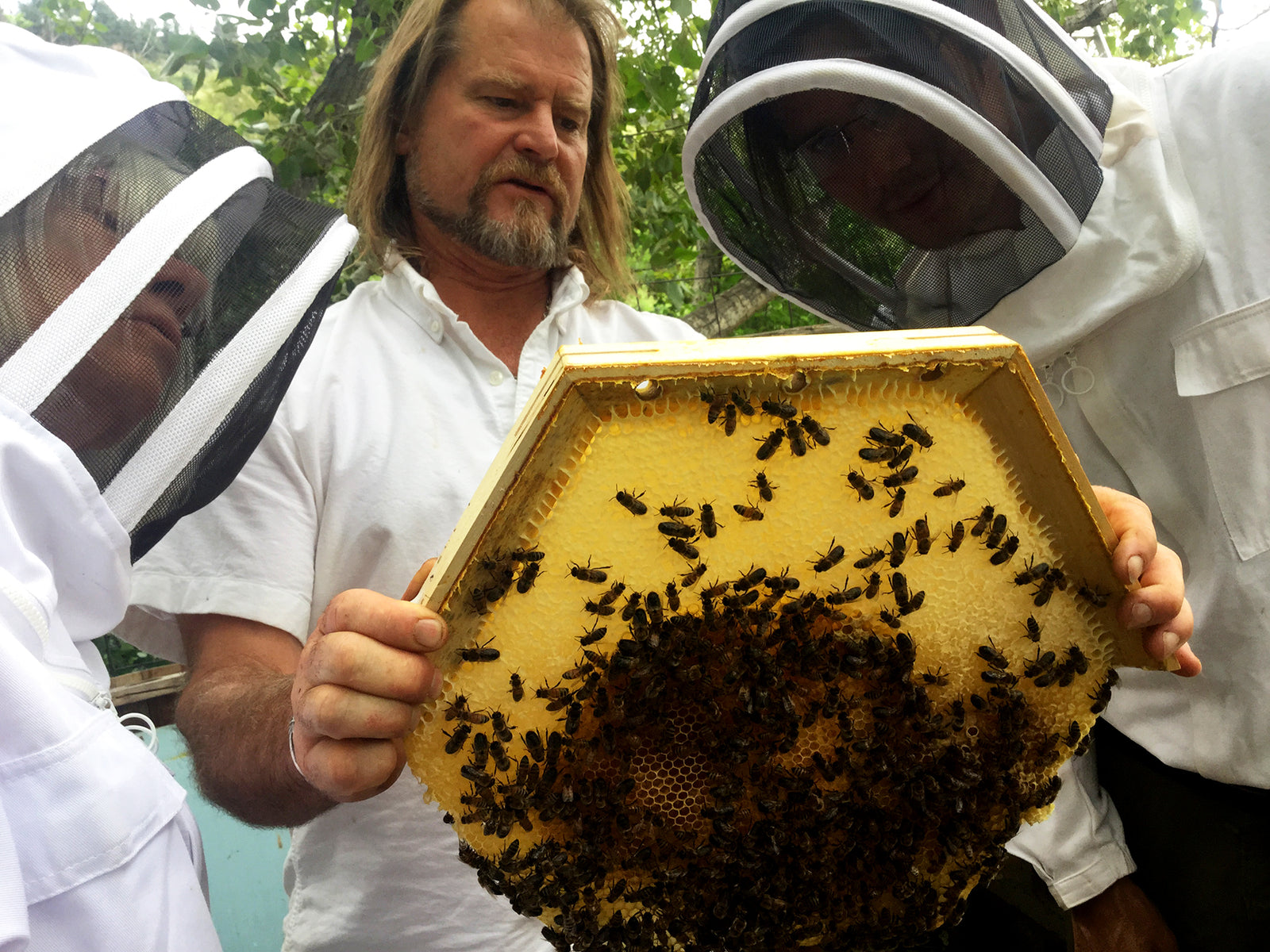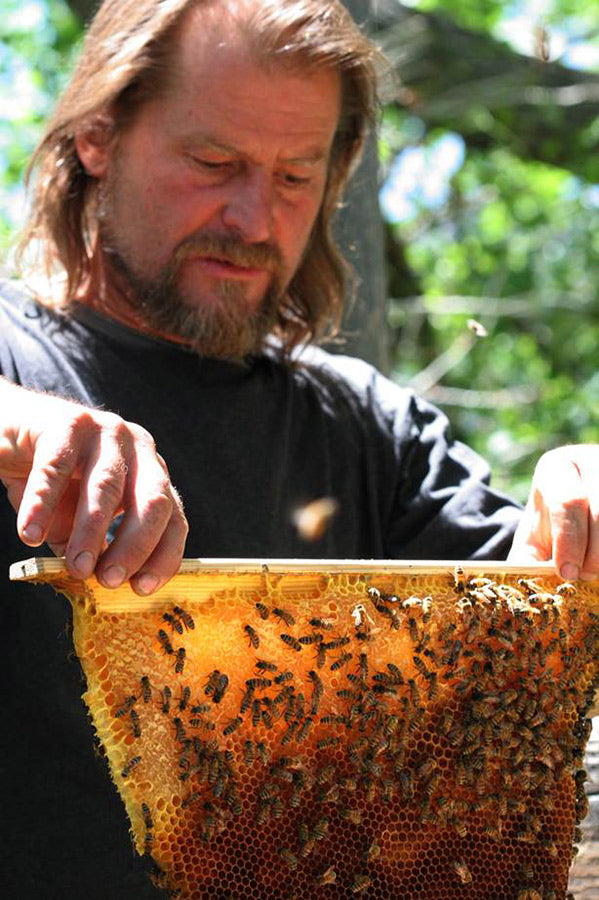Zen and the Art of Beekeeping
Many apitherapists are also beekeepers, since tending a hive lets them give back to the bees. “It’s a way for me to nurture them in return,” says Kathleen Miller, who has 14 hives on her 1.5-acre lot outside Albuquerque, New Mexico.
The beekeeper-bee relationship. A growing number of people want to revamp this altogether. Corwin Bell, in Boulder, Colorado teaches classes on how to care for hives in a more sustainable, nurturing manner: without using pesticides; without stressing the bees by intruding into the hive excessively; and without taking too much of their honey. Bell has developed such a meditative and attentive approach that when he approaches a hive, he doesn’t need to wear a bee suit. Instead, he can tell by the bees’ pitch if they’re upset by his approach. He uses the term bee guardian rather than beekeeper because “that’s what the bees need right now.” According to Bell, “Bees need people to protect them from pesticides, diseases, and the large-scale commercial practices that are threatening the hives’ survival.”
From arthritis to shingles, honeybees give the sting that heals.
By Kristin Bjornsen
Kathleen Miller, of Albuquerque, New Mexico, opened the bee box and with long-handled tweezers, removed a buzzing bee. She softly pressed its hind end on her knee. The bee stung her. At the time, says Miller, “I thought, This is wacko—plus, I’m killing an animal I love. What am I doing?”
But what she was doing was apitherapy, a form of medicine people in Egypt, Greece, and China have practiced for more than 5,000 years. Apitherapy uses bee venom, as well as pollen, honey, and other hive products, to prevent or treat illness and injuries. “Globally, it’s a huge system of medicine, especially in Asia, Europe, the Middle East, and South America, where even many MDs sting their patients,” says Frederique Keller, LAc, apitherapist, acupuncturist, and president of the American Apitherapy Society (AAS), headquartered in Centerport, New York. “The United States is way behind.” Here, although apitherapists can get “certificates of knowledge” by attending the AAS Charles Mraz Apitherapy Course and Conference, no formal certification or sanctioning exists, much like homeopathy.
But that’s changing, says Keller, with a growing number of physicians, acupuncturists, and everyday people embracing apitherapy as a treatment for conditions such as rheumatoid arthritis, osteoarthritis, shingles, tendonitis, gout, carpal tunnel syndrome, Lou Gehrig’s disease, fibromyalgia, painful scars and burns, multiple sclerosis (MS), and Lyme disease. With venom therapy, you can either go to an apitherapist—who will use live bees or injectable bee venom (only doctors can perform the latter)—or do it yourself after learning the techniques.
Miller, 59, turned to bee venom, which has strong anti-inflammatory and pain-relieving properties, for an arthritic and damaged knee. A world-class marathon runner in the ’80s, she placed fifth at the 1980 Boston Marathon. The pavement pounding pulverized her right knee, however, and in 1990, she tore the cartilage in the already weakened knee while rock climbing. She underwent surgery almost immediately and was running a month later. But in 1991, she tore cartilage again, this time while swimming. Once more, Miller had surgery, “completely unsuccessfully,” she says. For whatever reason, “my knee stayed in a postoperative condition: incredibly red, hot, swollen, and painful.” A pediatric nurse practitioner, she would immediately dive for a chair to take a patient’s history. At parties, standing around chatting tortured her. And every day, from 1992 to 1996, she took the maximum dosage of ibuprofen or other nonsteroidal anti-inflammatory drugs with little relief. She tried a third surgery, as well as acupuncture and myofascial relief techniques. No luck. “Those years were miserable,” says Miller. “I was begging for a knee replacement even though I was only 47 years old.”
Sting Operation
In spring 1996, Miller read about a farmer whose rheumatoid arthritis was cured when he put on his pajamas and was stung by a bee hiding in the pant leg. Her hopes raised, she began researching apitherapy and, in October, ordered a “bee box” (which contains dozens of bees and candy paste for them to eat) from Vermont. She stung herself and, slightly aghast, flung the bee across the patio. “I didn’t know then that the most humane thing to do is to smoosh them right away; otherwise it will take a couple hours for them to die,” Miller says. “The saddest thing was that she immediately flew to the box where the other bees were to be with her sisters.” She collected her wits and gathered the bee to end its suffering.
Over the next two days, her knee ballooned up, fiery red. “I was alarmed, but I couldn’t very well go to the ER and say, ‘Hey, I just stung myself with a bee. Can you help me?’” In reality, Miller’s reaction to the sting was ideal, says Keller: “It meant her immune system was rallying.” If people have a more seriously depressed or malfunctioning immune system than Miller’s, they may require multiple stings before it responds. For example, patients with MS (an autoimmune disease that attacks the nerves) may face six months of stinging before the sting causes the body to react at all. “When it does,” says Keller, “I get excited because it means the patient may respond positively to treatment.”
One big caveat, though: You have to watch for an allergic reaction. Although less than 1 percent of the population is allergic to bee venom, in those people, a sting can cause anaphylactic shock and even death. One of the first rules of apitherapy is to have an EpiPen (containing epinephrine) nearby and know how to use it at the first signs of throat constriction or difficulty breathing.
In Miller’s case, after two days, the swelling subsided—and her knee was one-third smaller than it had been in four years. “For the first time, the ‘heat’ in the knee was gone, too,” she says.
A Closer Look
The idea of intentionally stinging yourself “isn’t that far-fetched,” says Keller, “considering how many drugs have been developed from insect and snake venoms.” Still, the mechanism by which bee venom heals you remains somewhat mysterious. Although numerous compounds play a part, researchers have identified three important ones: melittin, adolapin, and apamin. One hundred times stronger than cortisone, melittin turns off several pro-inflammatory genes in the cells. It also increases production of the body’s own corticosteroids. Meanwhile, adolapin triggers the release of pain- blocking opiates. And apamin appears to enhance nerve conduction, dopamine production, and motor activity. That may explain why bee venom helps people with MS: The apamin may protect their nerve cells from damage. Most importantly, says Keller, the venom as a whole “stimulates and rebalances the immune system.” Just as you might pinch someone who’s drowsing off, the sting “wakes up” the immune cells, and as your body rallies itself to heal the sting, it heals your other ailments as well.
The location of the sting definitely matters, however. Most apitherapy users sting where the pain occurs and along the spine (to stimulate flow of blood and neurotransmitters). Practitioners also are discovering that stinging at acupuncture points gives your body an added boost by opening qi channels, says Keller.
The number of stings you get, and how often you get them, varies with each person. Someone with tennis elbow, for example, might just need two stings a week for three weeks, while someone with Lyme disease might need sessions three times a week, with 10-plus stings at each session, for six months or more.
The very nature of bee venom makes standardized studies difficult, but not impossible. And more and more research gets underway every year. In a 2004 study in Arthritis & Rheumatism, South Korean researchers gave rats with advanced rheumatoid arthritis low doses of bee venom. The treatment dramatically reduced swelling and bone spurs.
More exciting still, investigations with cell cultures show that venom primes the immune system to kill cancer cells. Since cancer cells have different characteristics than healthy cells, your immune system can normally recognize them and weed them out. The bee venom spurs a lagging immune system into action, so it better identifies and destroys these aberrant cells.
Recently, researchers at Georgetown University School of Medicine, Washington, DC, completed a study of MS patients receiving bee venom injections. The positive results and amelioration of symptoms prompted researchers to call for larger controlled studies.
For Miller, however, the proof lies in her new life. After that initial sting, she continued stinging herself three times a week. After a month or two, she could once again swim, hike, lift weights, and garden. After 15 months, she “took a leap of faith,” trusting she was healed, and cut back to only a maintenance sting every few months. Keller has seen similar improvements with her patients during her 20 years of using apitherapy. “When you think about how much the honeybee gives us—both therapeutically and by pollinating almost one-third of our food,” she says, “you understand that bees really are our food and our medicine.”
Kristin Bjornsen is a freelance writer who specializes in health and fitness.
The A, Bee, Cs of Apitherapy
Venom therapy represents just one form of apitherapy. Other bee products have potent healing properties as well. Here’s the rundown:
HONEY: With its antibacterial, anti-inflammatory, and immune-stimulating properties, honey can help treat third- and fourth-degree burns when applied topically, according to extensive clinical research. It also relieves coughs and the flu when eaten. Be sure, however, to use raw honey and not pasteurized and, thus, inert varieties.
POLLEN: Pollen contains all the essential amino acids as well as disease-fighting antioxidants, says Frederique Keller of the American Apitherapy Society. It helps regulate appetite, reduce allergies, and increase energy. The fresher the pollen, the better, so try to buy local, nonpasteurized pollen. Mix one gram into food and drinks.
PROPOLIS: Bees make propolis from tree resin and use it as an antiseptic “glue” to seal the hive and protect it from infections. Often taken in tablets or tinctures, propolis has antiviral, antibacterial, and antifungal properties, making it a good choice for treating colds, the fl u, wounds, yeast infections, hemorrhoids, and fungal infections. “New research has come out showing it has strong antitumor activity as well,” says Keller. “I have all my patients with cancer taking 16 grams of propolis a day.”
ROYAL JELLY: This is the food of the queen bees, who live for up to five years, compared to the four to six weeks of a worker bee. Secreted from the mandibular glands of the worker bee, this elixir promotes youthfulness, fertility, and rejuvenation, says Keller. It also helps build and maintain bone, blood, skin, and brain cells. “All women older than 40 should be taking 3,000 mg a day,” Keller says. The downside: Royal jelly costs more than other beehive products because it’s the most difficult to collect. You can also buy fresh royal jelly, though it’s more perishable.
For more info, go to the American Apitherapy Society’s website, www.apitherapy.org.


